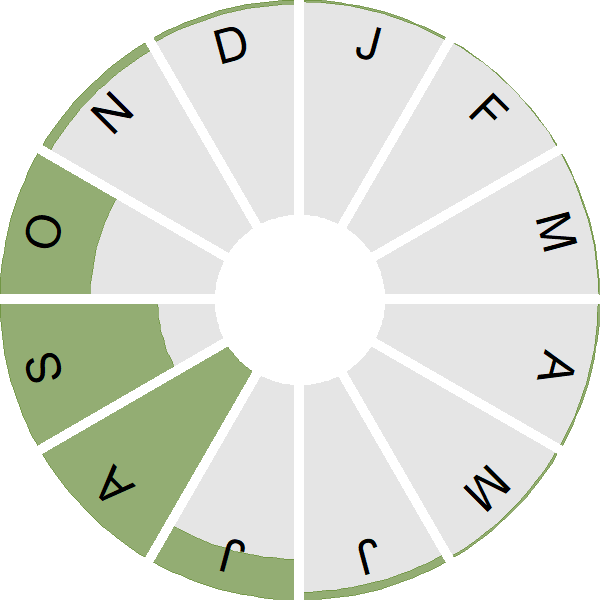Balearic Shearwater
Introduction
This Mediterranean shearwater, dusky-brown in colour, is a summer visitor to our waters when it can be seen from southern coasts.
Breeding around the coasts of the Balearic Islands in the western Mediterranean, from the start of the year to late spring, these birds then leave the Mediterranean and disperse into the Atlantic to undertake a post-breeding moult – many do this in the Bay of Biscay but some birds move further north.
Individuals head back to their breeding grounds during September. In some years a thousand or more Balearic Shearwaters can be present in our waters, a number that is thought to represent around one-third of the Mediterranean breeding population.
Key Stats
Identification
Songs and Calls
Call:
Status and Trends
Conservation Status
Population Size
Population Change
Population trends of this scarce species are not routinely monitored.
Distribution
Balearic Shearwaters records have increased in Britain and Ireland, perhaps due to increased sea surface temperatures. They do not breed but are recorded from mid summer into winter, especially along the southwest and south coast of Britain, with scattered records elsewhere.
Occupied 10-km squares in UK
2007/08–10/11
or view it on Bird Atlas Mapstore.
2008–11
or view it on Bird Atlas Mapstore.
Distribution Change
from 1981–84 to 2007–11
or view it on Bird Atlas Mapstore.
Seasonality
Balearic Shearwater is mostly recorded during autumn seawatching, from July onwards.
Weekly pattern of occurrence
The graph shows when the species is present in the UK, with taller bars indicating a higher likelihood of encountering the species in appropriate regions and habitats.

Movement
Britain & Ireland movement
Biology
Productivity and Nesting
Nesting timing
Egg measurements
Clutch Size
Survival and Longevity
Survival is shown as the proportion of birds surviving from one year to the next and is derived from bird ringing data. It can also be used to estimate how long birds typically live.
Classification, names and codes
Classification and Codes
- Order: Procellariiformes
- Family: Procellariidae
- Scientific name: Puffinus mauretanicus
- Authority: PR Lowe, 1921
- BTO 2-letter code: YQ
- BTO 5-letter code: BALSH
- Euring code number: 463
Alternate species names
- Catalan: baldriga balear
- Czech: burnák baleárský
- Danish: Balearskråpe
- Dutch: Vale Pijlstormvogel
- Estonian: baleaari tormilind
- Finnish: baleaarienliitäjä
- French: Puffin des Baléares
- German: Balearensturmtaucher
- Hungarian: baleári vészmadár
- Icelandic: Brúnskorfa
- Irish: Cánóg Bhailéarach
- Italian: Berta balearica
- Latvian: Balearu vetrasputns
- Lithuanian: balearine audronaša
- Norwegian: Balearlire
- Polish: burzyk balearski
- Portuguese: fura-bucho
- Slovak: víchrovník baleársky
- Slovenian: balearski viharnik
- Spanish: Pardela balear
- Swedish: balearisk lira
- Welsh: Aderyn Drycin Balearig
More Evidence
More evidence from Conservation Evidence.com
Partners
Citing BirdFacts
If you wish to cite particular content in this page (e.g. a specific value) it is best to use the original sources as linked in the page. For a more general citation of the whole page please use: BTO (20XX) BirdFacts Species: profiles of birds occurring in the United Kingdom. BTO, Thetford (www.bto.org/birdfacts, accessed on xx/xx/xxxx).

